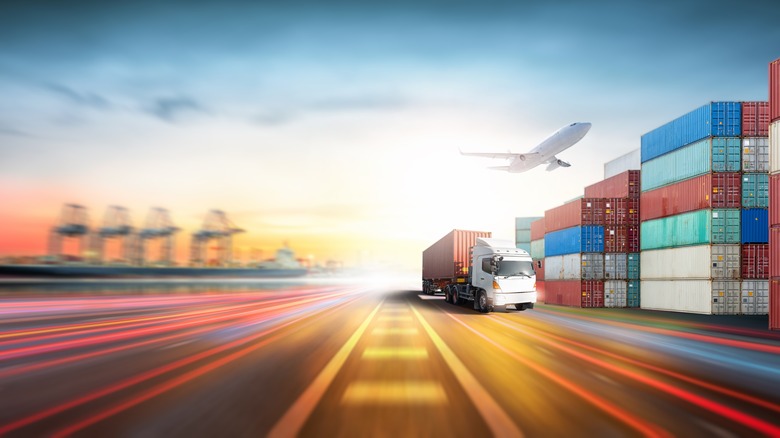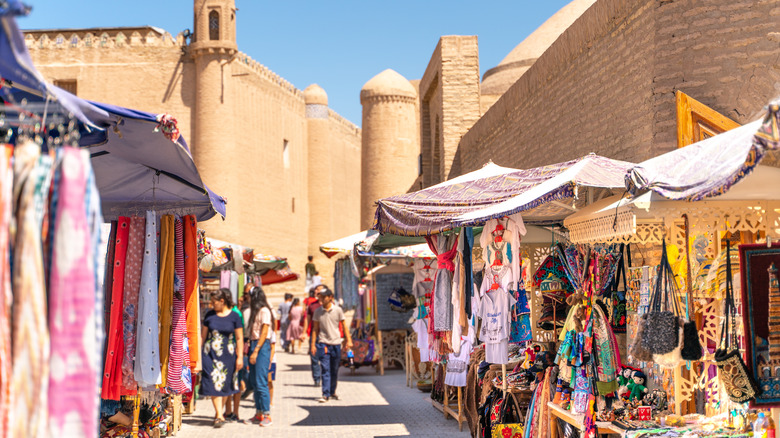What Is A Global Supply Chain?
When you pick up your smartphone and flip that over, chances are you'll find that it was made fairly far from where you are, likely somewhere in Asia. That item will probably say it was "designed" in one place before it was "assembled" somewhere else. And while you might know that there's a great leap between designing something and making it come to life, your smartphone manufacturer is not likely to have provided any explanations about how and where its different parts were made before they were pulled together to become the phone you're holding in your hand. That entire process of taking your phone from a design on paper to reality is an example of what a global supply chain looks like in action.
BDC describes a global supply chain as all the steps needed to design and build something before it can be delivered to a customer. If the components needed to deliver the product — or a service — into a customer's hands are located in different countries, then you'd be looking at a global supply chain.
How the global supply chain works
While your phone could be one of the best examples of how the system works, just about anything can be produced by a global supply chain, from sophisticated electronics to simple clothing, like a plain T-shirt. Blume Global maps out a simple supply chain, which sees raw materials collected in one place, before the material is sent to a factory at a second location to be refined, and possibly be turned into individual parts. Those items can then be shipped to a third location to be assembled into the product we see in our shops, which are then sent to a distributor, who then sends the finished product to a retail point to be sold to consumers.
It might sound like a straightforward exercise, but as Blume Global points out, a global supply chain is anything but that, because the chain involves a multi-step process. For every step of the way, documents are needed to ensure products can move from one place to another. All goods, from materials to partially finished goods, as well as the finished consumer product, need to be transported without a hitch, and they need to be stored somewhere until they're distributed. All these functions go together like links on a chain, which can also explain why chaos and bottlenecks happen when one or several of the links are broken.
History of the global supply chain
We might think the global supply chain was the result of a 20th-century movement, but supply chains have been around for hundreds of years. The Silk Road, for instance, which brought spices to trade from Asia through Europe, is considered an early example of a global supply chain — even though the merchants who traveled the routes were taking finished products with them.
It wasn't until the 18th century, when ships began crossing the ocean, that the concept of bringing raw materials to another location for processing came to be. The Globalist refers to rum manufacturing during that period, which saw the use of African slave labor harvesting sugarcane whose cuttings came from India and were grown in the Caribbean. After the drink was distilled in New England, it was then sent back to Europe to be consumed.
Until the pandemic, the global supply chain of the 21st century was probably not too different. Solvice notes that products are still being made in places where labor is cheap, and these goods are still being transported, mostly by sea, from their places of origin to final destinations in Europe and the United States.


